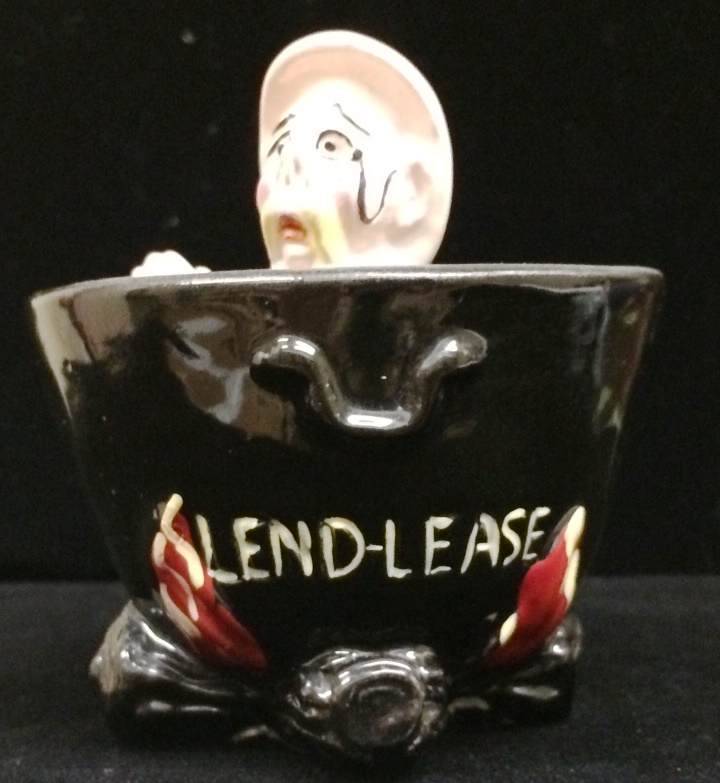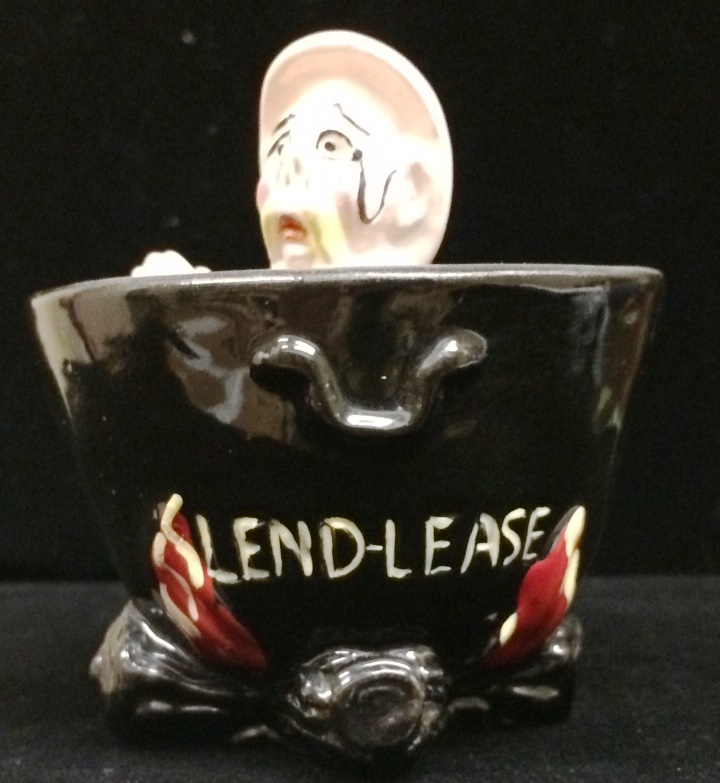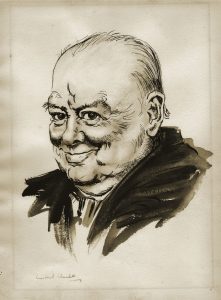
Bulletin #103 - Jan 2017
Churchilliana

January 7, 2017
Churchill Collectables: Lend Lease Stewpot
By BRIAN KRAPF


2024 International Churchill Conference
In response, Roosevelt proposed the “Lend-Lease” bill. If passed by Congress, it would permit the president to “sell, transfer title to, exchange, lease, lend, or otherwise dispose of,” military aid to any foreign governments whose defense he deemed vital to the defense of the United States. In December 1940, FDR proclaimed the US the “Arsenal of Democracy.” Isolationists—particularly Congressional Republicans—were strongly opposed and warned the bill’s passage would lead to American involvement in a European conflict. Opinion began to shift, however, as the public began to see that America could assist Britain while not committing American troops. Public opinion was also turned by propaganda depicting Blitz devastation and popular images depicting Germans as savages.
On 9 February 1941, the House of Representatives approved Lend-Lease, with the vote essentially following party lines. The bill passed the Senate a month later. President Roosevelt signed the Lend-Lease bill into law on 11 March 1941. He then approved $1 billion in Lend-Lease aid to Britain at the end of October, 1941. This little ceramic pot is a rare memento of a tumultuous time in Britain’s wartime history, when there was definite uncertainty as to whether the United States would provide vital and necessary assistance.
Brian Krapf formerly served as President of the American Political Items Collectors, which is devoted to the preservation and study of America’s political heritage. He has been honored with APIC’s highest award: induction into the organization’s Hall of Fame. Items from the Krapf collection have been featured in History Channel documentaries and also in major print media publications. He has also served as a national advisor to eBay in the areas of security and fraud detection, and he designed eBay’s current political memorabilia listing categories.
Subscribe
WANT MORE?
Get the Churchill Bulletin delivered to your inbox once a month.




